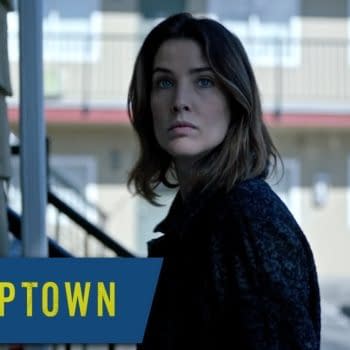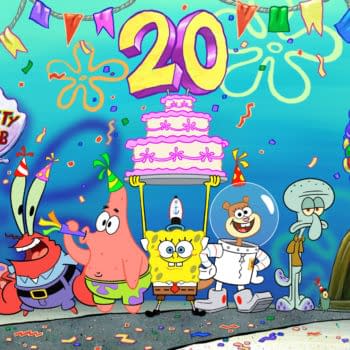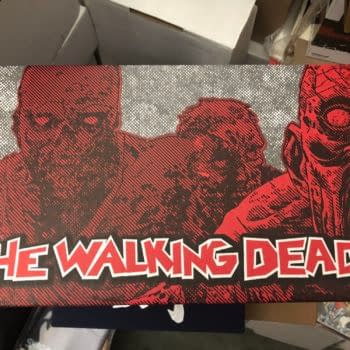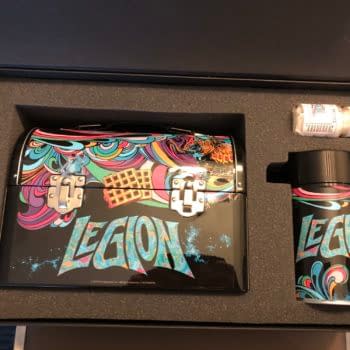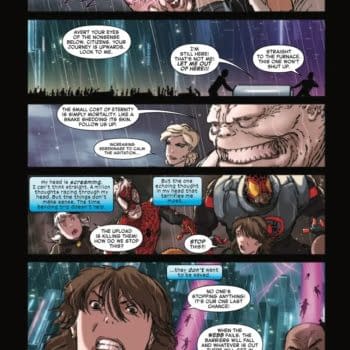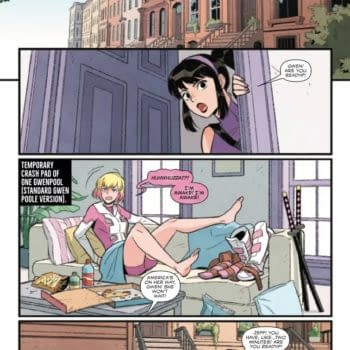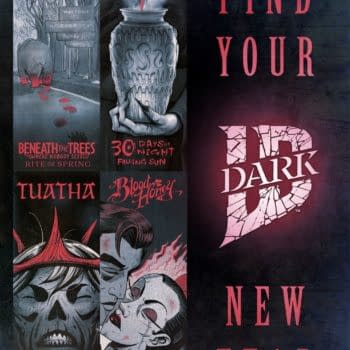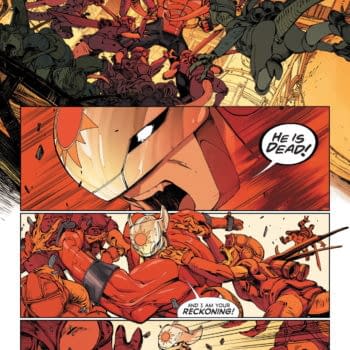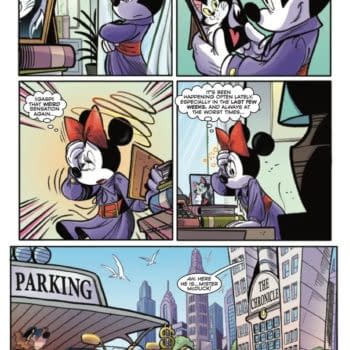Posted in: Comics, Recent Updates, WonderCon | Tagged: 10 Things I Hate About You, boom box, boom studios, Kirsten Smith, Kiwi Smith, legally blonde, Misfit City, the goonies, wondercon
Hugging It Out With Kiwi Smith And Kurt Lustgarten In Their Misfit City
At Wondercon 2017, I had the pleasure of getting a chance to meet with and interview the amazing Kirsten "Kiwi" Smith (screenwriter of 10 Things I Hate About You, Legally Blonde, The House Bunny, and more), and Kurt Lustgarten. Both were at Wondercon to promote their new book, Misfit City, from Boom Studios imprint Boom Box, which has its first issue due out next week. So we had this really good interview, and both Kiwi and Kurt were very nice and wonderful to talk to. Within two seconds of meeting I found out that Kiwi Smith is a hugger. The whole thing was great. Until I got home to transcribe the interview and discovered that I had accidentally hit pause at the beginning of interview and had no audio. Thankfully, both of them were nice enough to talk more of their time and make it available for the fine Bleeding Cool readers by re-answering the questions I could remember asking by email.
Joshua Stone: First, please tell me about the book?
Kiwi Smith: Misfit City is about a group of girls living in a small, Pacific Northwest coastal town that most people have only heard of because it was the filming location for a beloved kids' adventure movie from the 1980s. They're sick of their town and the tourists that come to gawk at them, but they end up discovering a real treasure map, which leads them on an adventure even crazier than the one in the movie.
JS: What was the inspiration behind the creation of this story?
Kurt Lustgarten: Classic 1980s adventure movies, like The Goonies, The Monster Squad, Raiders of the Lost Ark. Besides feeling like these types of stories are missing today, we also realized they never feature a crew of girls.
JS: When we had the interview that I accidentally didn't record, I asked about the wave of '80s nostalgia that your book seems to grow up out of and how something like Stranger Things also seems to have come from the same thing. Why do you think there is this hunger to reach back to the '80s?
KS: The '80s weren't exactly idyllic, but compared with a lot of what's going on now, it seems like a simpler time. It's also sort of the last analog decade, when kids still went traipsing through the woods in search of adventure. Right now, it feels like people kind of miss that. Or maybe it's simply that the people who grew up in that era are simply coming of age as content creators.
JS: How did it wind up with Boom Studios, specifically the Boom Box imprint?
KS: Through the miracle of Twitter, I connected with Shannon Watters at Boom Box. Then Shannon emailed me and we met for lunch and started talking about working together.
JS: How was Naomi Franquiz chosen as the artist?
KL: [Boom Studios Editor] Shannon Watters found Naomi. Shannon has this incredible stash of artists that she keeps tabs on. She showed us several fantastic artists and then one day she sent us an email saying she had the perfect person for our book, and attached were these incredible character designs that Naomi had drawn.
JS: I read another interview with you where you discussed how Naomi's designs changed the characters. Can you tell me more about that effect on how she changed the characters for you, whether it just changed how you pictured the characters in your head or did it change the direction you took the characters in as a result of what she came up with?
KS: We kept our character descriptions focused more on attitude—who the girls were and what their interests were. We wanted Naomi to have the freedom to picture how their attitude would manifest, especially after seeing her initial test designs.
Part of the fun is also seeing how an idea can be interpreted by someone else instead of insisting that things be done your way. It's sort of like seeing an audition by an unexpected actor who gives you an interpretation of the character that's different—and even better—from what you imagined.
Now Naomi's designs actually filter back into how we write the characters. Like Macy. Obviously, we had a sense of who Macy was when we created her, but after seeing Naomi's designs for her (her clothes, her posture, her facial expressions), it actually crystallized her for us. Now it's even easier to write Macy's dialogue because we can see her saying it.
JS: How do you compare the creative process of making Misfit City to movie-making?
KS: It's much more intimate, obviously. Making Misfit City has been lovely because Boom is so supportive of their writers. Movie-making can be politically charged and stressful, and with this, it feels much more creatively pure. But my favorite part has been this whole awesome soul-connection we've gotten to have with Naomi as she's bringing our story to life.
JS: How did the two of you to decide to work together on this project?
KL: We were driving back from visiting Kiwi's parents on the Olympic Peninsula in Washington. I had always wanted to visit Astoria, Oregon (where they filmed The Goonies) so we made a detour. As we rolled into town blasting Cyndi Lauper's theme song from the movie, it got us thinking about what it must be like for kids who grow up in a town famous for being the filming location of a classic kids' adventure movie. Who lived there and what were their lives like? We started brainstorming the story on the drive home and had a pretty good sense of it by the time we got back to LA.
JS: Do you have the whole story mapped out, so to speak, or do you just know the end but not actually the route the journey will take to get to the end?
KL: We mapped out the first four issues pretty tightly with Shannon and Sophie [Philips-Roberts], our editors at Boom Beyond that, we have ideas for continuing the adventure that we're really excited about.
JS: My understanding is the book is a 4 issue mini series with the possibility of being picked up for more of a long-term series. If it only makes it as a for 4 issue mini series, do you think the ending will be a complete enough story in itself to satisfy the readers?
KS: We think so, and a lot of that has to do with creating strong characters that we hope readers really enjoy spending time with—and if they do, we'd be very happy writing many more tales for this merry band of misfits.
For further musings from Joshua Stone, you can follow him on Twitter @1NerdyOne









